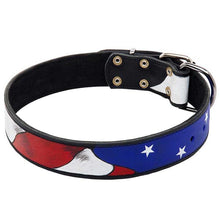The History Of The German Shepherd Dog

Knowing the history of the German shepherd will give you insight into what makes this magnificent breed so amazing and what kind of pets they make. Although lots of breeding has influenced the original working line, developed in its earliest origins in the 1850’s, some of their wonderful traits remain the same.
1850’s - The Earliest Attempts
In the 1950’s in Europe, working shepherd dogs were needed to herd sheep and protect flocks from predators. During this time, attempts began being made to standardize breeds by breeding dogs that showed the strong working skills necessary to do the job such as intelligence, speed, strength, and acute smell.
There was some initial success in these earliest attempts. Dogs were bred that were up for the job but they varied greatly in appearance, ability, and from one dog to another, and from territory to territory.
In an attempt to standardize the breed in Germany, the Phylax Society was formed in 1891. Although their attempt was commendable, they disbanded after three years after disagreements over what traits a dog should possess.
One member, not willing to give up on his dream of breeding the perfect working dog, was Max von Stephanitz.
The First German Shepherd Dog Declared
In 1899, Max von Stephanitz was attending a dog show where he was introduced to a dog named Hektor Linkshein. That’s when everything changed. Hektor was the product of several generations of well bred working dogs. Von Stephanitz immediately bought him having been captivated by his intelligence, loyalty, and beauty.
Von Stephanitz changed the dog’s name to Horand von Grafrath. He then founded the Verein für Deutsche Schäferhunde (Society for the German Shepherd Dog). Horand was declared the first German Shepherd Dog and was the first dog added to the society’s breed register.
Horand is the grandfather of the breed and bred with other dogs that displayed the working dog traits Von Stephanitz was looking for. The most successful breeding produced a dog named Hektor von Schwaben, who went on to produce a dog named Beowolf, who sired eighty four puppies.
It is believed that Von Stephanitz was successful at breeding the German shepherd dog due to his commitment to creating a highly intelligent dog that lived to work. We have him to thank for the wonderful breed we enjoy today.
The AKC Accepts Registration of the Breed
In 1908, the first German shepherd was registered by the American Kennel Club. The popularity of the dog suffered some after a bad breeding and anti German sentiment. However, by 1937, Americans had once again fell in the love with the dog and its popularity continued to slowly grow until 1993, when it became the third most popular breed. By 2009 the breed was the second most popular in the United States, where it remains.
Famous Working Dogs
Since the original dogs were bred for the ability to herd sheep and protect the flock, they were high energy and liked to work. Traits in the German shepherd include:
- Intelligence
- Solid temperament/nerves
- Bravery
- High energy/active
- Eager to work/learn
- Self assurance/confidence
- Protectiveness
- Alert
- Acute sense of smell
- Loyalty
German Shepherd Dog Lines
There are many lines of the German shepherd in existence today. They have been bred for their type and traits. Care should be taken to understand each type before choosing a dog since their drive and temperament can vary greatly. They include:
- American show line
- West German show line
- West German working line
- Czech working lines
- DDR/East German working lines
Owning a German Shepherd
To own a German shepherd is to love them and many owners will tell you that they cannot live without one. They are magnificent dogs that excel in law enforcement, military, herding, dog sports, and in active family homes.
Today, reliable breeders continue to breed dogs with the traits that made them famous while trying to produce offspring that are healthy and free from common health problems such as hip and elbow dysplasia, degenerative myelopathy, and degenerative spinal stenosis.
Please share the history of the German shepherd with your family and friends.
























